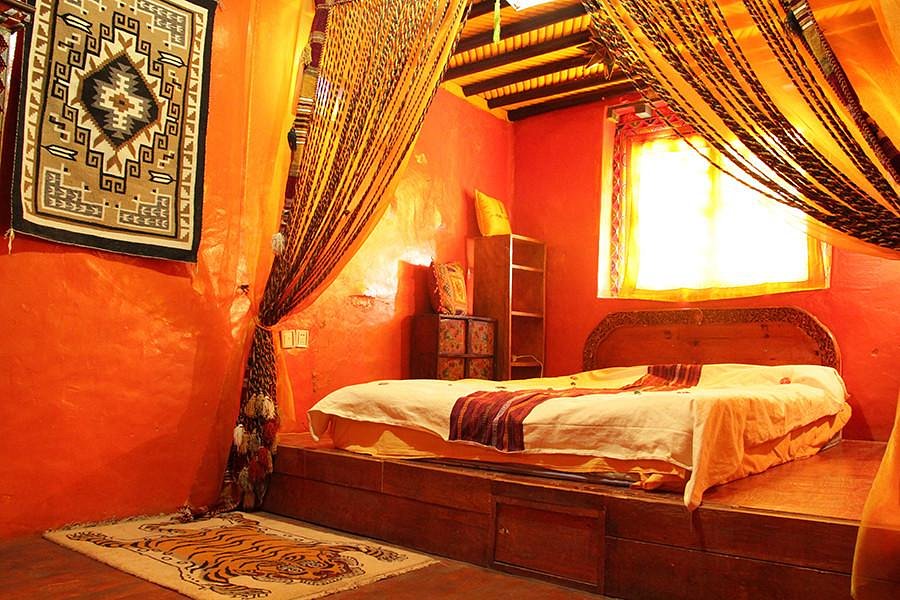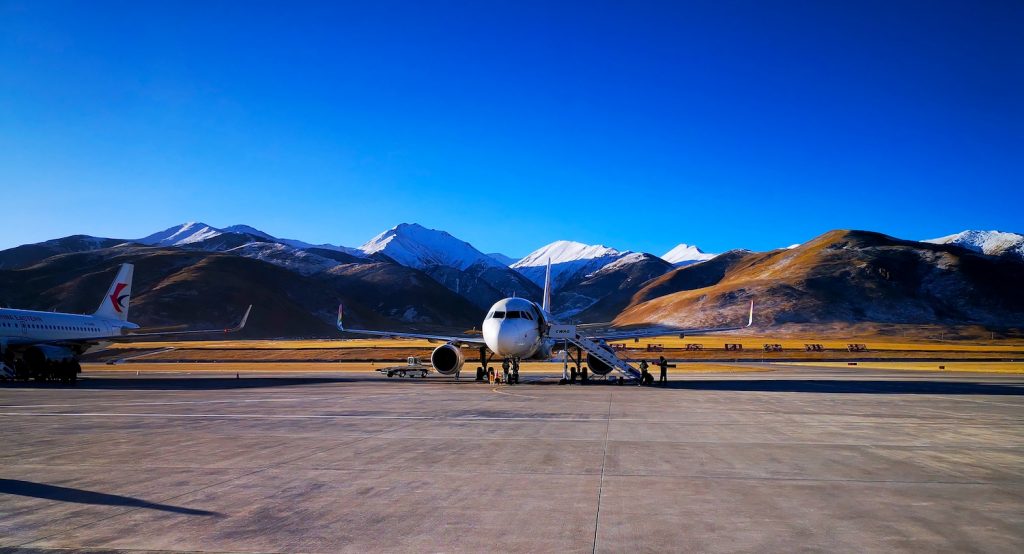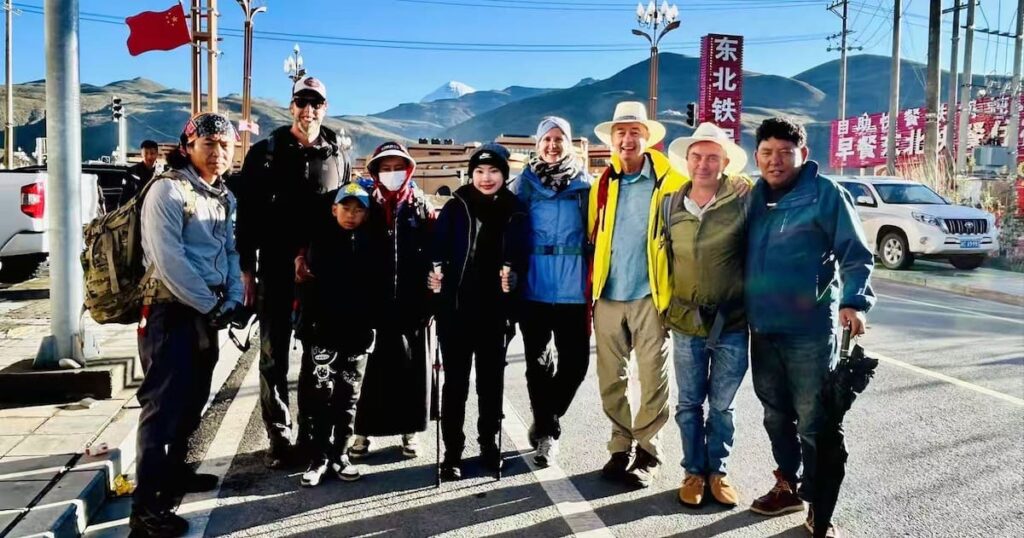Tibet, often referred to as the “Roof of the World,” has captivated travelers for centuries with its rich culture, spiritual significance, and stunning landscapes. While Tibet is a sought-after destination throughout the year, visiting in winter offers a unique and serene experience. The winter months in Tibet (typically from November to February) bring fewer crowds, quieter monasteries, and snow-covered peaks that transform the region into a magical winter wonderland.
Traveling to Tibet in winter may seem intimidating at first—due to the extreme altitude, cold temperatures, and logistical challenges—but with the right preparation, it can be an incredibly rewarding journey. Whether you’re visiting the capital city of Lhasa, trekking in the Himalayas, or exploring the sacred lakes and monasteries, this guide will help you navigate everything you need to know about how to travel to Tibet in winter.

Why Winter is a Great Time to Visit Tibet
While many people think of Tibet as a summer destination, winter offers distinct advantages for travelers who are willing to brave the chill. Here are a few reasons why visiting Tibet in winter is a unique and rewarding experience:
1. Less Crowded: The main tourist season in Tibet falls between April and October. During the winter months, fewer tourists visit, which means you can experience Tibet’s sacred sites, monasteries, and natural wonders in peace, away from the bustling crowds.
2. Stunning Snow-Capped Landscapes: Tibet in winter is like a scene from a dream. Snow-covered mountains, frozen lakes, and clear skies create an ethereal atmosphere that enhances the region’s natural beauty. The Himalayan peaks look even more majestic when dusted with snow, offering excellent photo opportunities.
3. Spiritual Peace: Many Tibetan pilgrims visit Tibet during winter to perform religious rituals, making the atmosphere in the monasteries and temples peaceful and introspective. The quiet winter months provide a great opportunity to engage in meditation or reflection in sacred places.
4. Affordable Travel: Because winter is the off-season, prices for hotels, flights, and tours tend to be lower compared to the busy summer months. It’s an affordable time to explore Tibet, especially if you’re flexible with your plans.

What to Expect When Traveling to Tibet in Winter
Before you embark on your winter journey to Tibet, it’s important to understand the challenges and realities of traveling in such a high-altitude, remote location during the coldest months of the year.
1. Cold Weather and Snow: Winter temperatures in Tibet can be extreme, especially at higher altitudes. The temperature in Lhasa, located at 3,650 meters (12,000 feet), can range from -5°C to 15°C (23°F to 59°F). In the mountain regions, temperatures can drop well below freezing. Be prepared for snow, especially if you’re heading to areas like Mount Everest Base Camp or Lake Namtso.
2. Altitude Sickness: Tibet’s high altitude means that visitors must be cautious of altitude sickness (acute mountain sickness). Even though winter temperatures can be cold, the high altitude is the real concern. Symptoms of altitude sickness include headaches, dizziness, shortness of breath, and fatigue. It’s important to acclimatize slowly and avoid overexerting yourself, especially in the first few days.
3. Shorter Days: During winter, Tibet experiences shorter daylight hours. In December and January, the sun may set as early as 5:30 PM. This means you’ll need to plan your outdoor activities carefully to take advantage of the daylight.
4. Limited Access to Remote Areas: Some areas of Tibet, particularly high-altitude trekking regions or remote locations, may be more difficult to access during winter due to heavy snow or road closures. Always check with local guides and authorities to ensure that your planned destinations are accessible.

How to Travel to Tibet in Winter: A Step-by-Step Guide
Traveling to Tibet during the winter months requires some extra planning and preparation. Below are the essential steps for making your winter journey to Tibet a smooth and enjoyable experience.
1. Obtain a Tibet Travel Permit
One of the first and most important steps in planning your winter trip to Tibet is securing the necessary permits. Unlike other regions of China, Tibet has special travel regulations, and all travelers (except for Chinese nationals) must obtain a Tibet Travel Permit.
• How to Get a Tibet Travel Permit: You cannot apply for a Tibet Travel Permit on your own; you must book your trip through a licensed travel agency. The agency will submit your application on your behalf and arrange the permit. The application process typically requires a copy of your passport and Chinese visa. It takes about 15-20 days to process your permit, so plan well in advance.
• Additional Permits for Restricted Areas: If you plan to visit areas like Mount Kailash or the Everest Base Camp (EBC), additional permits are required. These permits often require travel agencies to coordinate with local government offices and sometimes with military personnel. These areas are also more likely to be inaccessible during the winter months, so always confirm with your travel agency about availability.

2. Book Flights or Trains to Tibet
You have two main options for getting to Tibet: by air or by rail.
• Flying to Tibet: The easiest and most efficient way to reach Tibet is by flying into Lhasa Gonggar Airport (LXA), located about 60 kilometers (37 miles) from the city of Lhasa. Several major Chinese cities, including Beijing, Chengdu, Shanghai, and Xi’an, have direct flights to Lhasa. During winter, flights to Lhasa may be less frequent, so it’s important to book your flights well in advance.
• Train to Tibet: Another popular way to reach Tibet is by taking the train to Lhasa via the Qinghai-Tibet Railway, the highest railway line in the world. The train journey offers breathtaking views of the Tibetan plateau and a chance to slowly acclimatize to the altitude. The train runs year-round, though winter months can bring some delays due to snow, especially on certain stretches of the line. It’s a scenic and unforgettable way to travel, but it can take longer than flying.
3. Prepare for the Cold Weather
Winter temperatures in Tibet can be harsh, so proper clothing and equipment are essential. Here’s a packing checklist for your winter trip to Tibet:
• Warm Layered Clothing: Tibet’s high-altitude climate requires warm clothing. Layering is key to staying comfortable. A good-quality winter jacket, thermal base layers, a fleece sweater, and wool socks are all essential.
• Waterproof Gear: Snow and ice are common, so make sure you have waterproof boots, gloves, and a warm hat. An umbrella or waterproof jacket may come in handy.
• Sunglasses and Sunscreen: Despite the cold, the sun can be intense at high altitudes, and the reflection off snow can increase UV exposure. Sunglasses with UV protection and high-SPF sunscreen are a must.
• Medications: If you’re prone to altitude sickness, carry medication to prevent or treat it, such as Diamox (Acetazolamide), and consult with your doctor before traveling.
4. Acclimatize to the High Altitude
Tibet’s high altitude can be challenging, particularly if you’re not used to thin air. Even in winter, it’s essential to allow time for acclimatization when you first arrive in Lhasa.
• Take It Slow: Spend your first few days in Lhasa resting and allowing your body to adjust. Avoid strenuous activity for the first 48 hours, and make sure to drink plenty of water.
• Altitude Sickness: Symptoms can appear within hours of arrival. Stay hydrated, eat light meals, and avoid alcohol. If you experience severe symptoms such as dizziness or vomiting, consult a local doctor immediately.
• Altitude-Adjusted Activities: Start with low-impact activities, like visiting the Potala Palace or Jokhang Temple, and gradually work your way up to higher altitudes.
5. Plan Your Winter Activities
Winter in Tibet provides a unique opportunity to enjoy various outdoor activities that are difficult to do during the busier months. Here are some things to do during your winter visit:
• Trekking: Winter trekking in Tibet is incredible. While Everest Base Camp may be challenging, there are other great routes like the Tsurphu to Yangpachen trek or the Namtso Lake trek, where you’ll enjoy stunning snow-capped mountains and serene landscapes.
• Cultural Exploration: Take the time to explore the spiritual heart of Tibet—Lhasa. Visit sacred sites like the Potala Palace, Jokhang Temple, and the Barkhor Circuit for quieter, reflective experiences.
• Losar Festival: If your trip coincides with the Tibetan New Year (Losar), you can immerse yourself in the colorful celebrations, ceremonies, and traditional Tibetan music and dance.

Conclusion: A Winter Adventure Like No Other
Traveling to Tibet in winter offers an unparalleled experience of this mystical region. From the breathtaking snow-covered landscapes to the peaceful spiritual atmosphere in monasteries, winter allows you to experience Tibet in a way that is deeply personal and reflective. By following the tips outlined in this guide—obtaining the necessary permits, preparing for the cold, and taking proper acclimatization measures—you can enjoy a safe, fulfilling, and unforgettable journey to the Roof of the World.
So, if you’re seeking a winter adventure that combines natural beauty, culture, and spirituality, Tibet in winter awaits. The magic of the Himalayas, the serenity of sacred

[…] Whether you’re a seasoned trekker, a culture enthusiast, or someone seeking spiritual peace, winter in Tibet offers a wide range of activities that let you immerse yourself in the magic of the […]